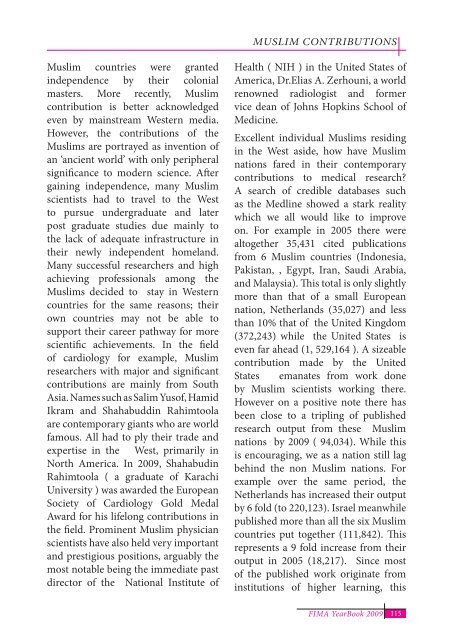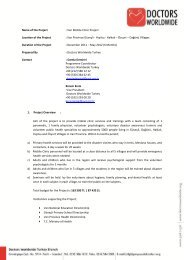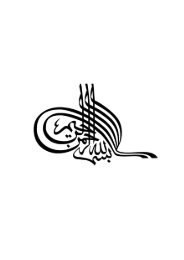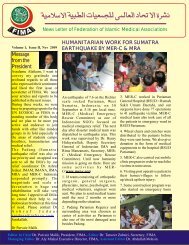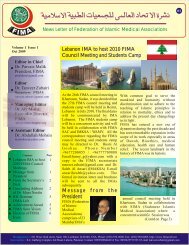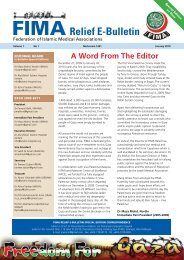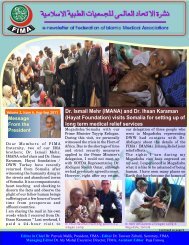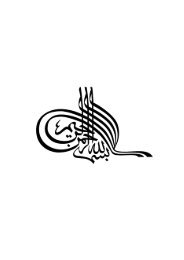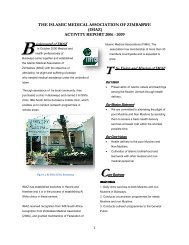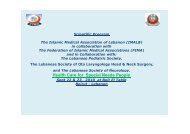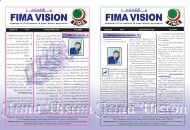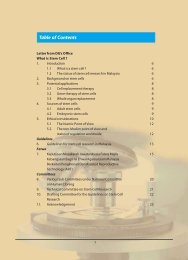FIMA Year Book 2009 - Federation of Islamic Medical Associations
FIMA Year Book 2009 - Federation of Islamic Medical Associations
FIMA Year Book 2009 - Federation of Islamic Medical Associations
You also want an ePaper? Increase the reach of your titles
YUMPU automatically turns print PDFs into web optimized ePapers that Google loves.
Muslim ContributionsMuslim countries were grantedindependence by their colonialmasters. More recently, Muslimcontribution is better acknowledgedeven by mainstream Western media.However, the contributions <strong>of</strong> theMuslims are portrayed as invention <strong>of</strong>an ‘ancient world’ with only peripheralsignificance to modern science. Aftergaining independence, many Muslimscientists had to travel to the Westto pursue undergraduate and laterpost graduate studies due mainly tothe lack <strong>of</strong> adequate infrastructure intheir newly independent homeland.Many successful researchers and highachieving pr<strong>of</strong>essionals among theMuslims decided to stay in Westerncountries for the same reasons; theirown countries may not be able tosupport their career pathway for morescientific achievements. In the field<strong>of</strong> cardiology for example, Muslimresearchers with major and significantcontributions are mainly from SouthAsia. Names such as Salim Yus<strong>of</strong>, HamidIkram and Shahabuddin Rahimtoolaare contemporary giants who are worldfamous. All had to ply their trade andexpertise in the West, primarily inNorth America. In <strong>2009</strong>, ShahabudinRahimtoola ( a graduate <strong>of</strong> KarachiUniversity ) was awarded the EuropeanSociety <strong>of</strong> Cardiology Gold MedalAward for his lifelong contributions inthe field. Prominent Muslim physicianscientists have also held very importantand prestigious positions, arguably themost notable being the immediate pastdirector <strong>of</strong> the National Institute <strong>of</strong>Health ( NIH ) in the United States <strong>of</strong>America, Dr.Elias A. Zerhouni, a worldrenowned radiologist and formervice dean <strong>of</strong> Johns Hopkins School <strong>of</strong>Medicine.Excellent individual Muslims residingin the West aside, how have Muslimnations fared in their contemporarycontributions to medical research?A search <strong>of</strong> credible databases suchas the Medline showed a stark realitywhich we all would like to improveon. For example in 2005 there werealtogether 35,431 cited publicationsfrom 6 Muslim countries (Indonesia,Pakistan, , Egypt, Iran, Saudi Arabia,and Malaysia). This total is only slightlymore than that <strong>of</strong> a small Europeannation, Netherlands (35,027) and lessthan 10% that <strong>of</strong> the United Kingdom(372,243) while the United States iseven far ahead (1, 529,164 ). A sizeablecontribution made by the UnitedStates emanates from work doneby Muslim scientists working there.However on a positive note there hasbeen close to a tripling <strong>of</strong> publishedresearch output from these Muslimnations by <strong>2009</strong> ( 94,034). While thisis encouraging, we as a nation still lagbehind the non Muslim nations. Forexample over the same period, theNetherlands has increased their outputby 6 fold (to 220,123). Israel meanwhilepublished more than all the six Muslimcountries put together (111,842). Thisrepresents a 9 fold increase from theiroutput in 2005 (18,217). Since most<strong>of</strong> the published work originate frominstitutions <strong>of</strong> higher learning, this<strong>FIMA</strong> <strong>Year</strong><strong>Book</strong> <strong>2009</strong>115


